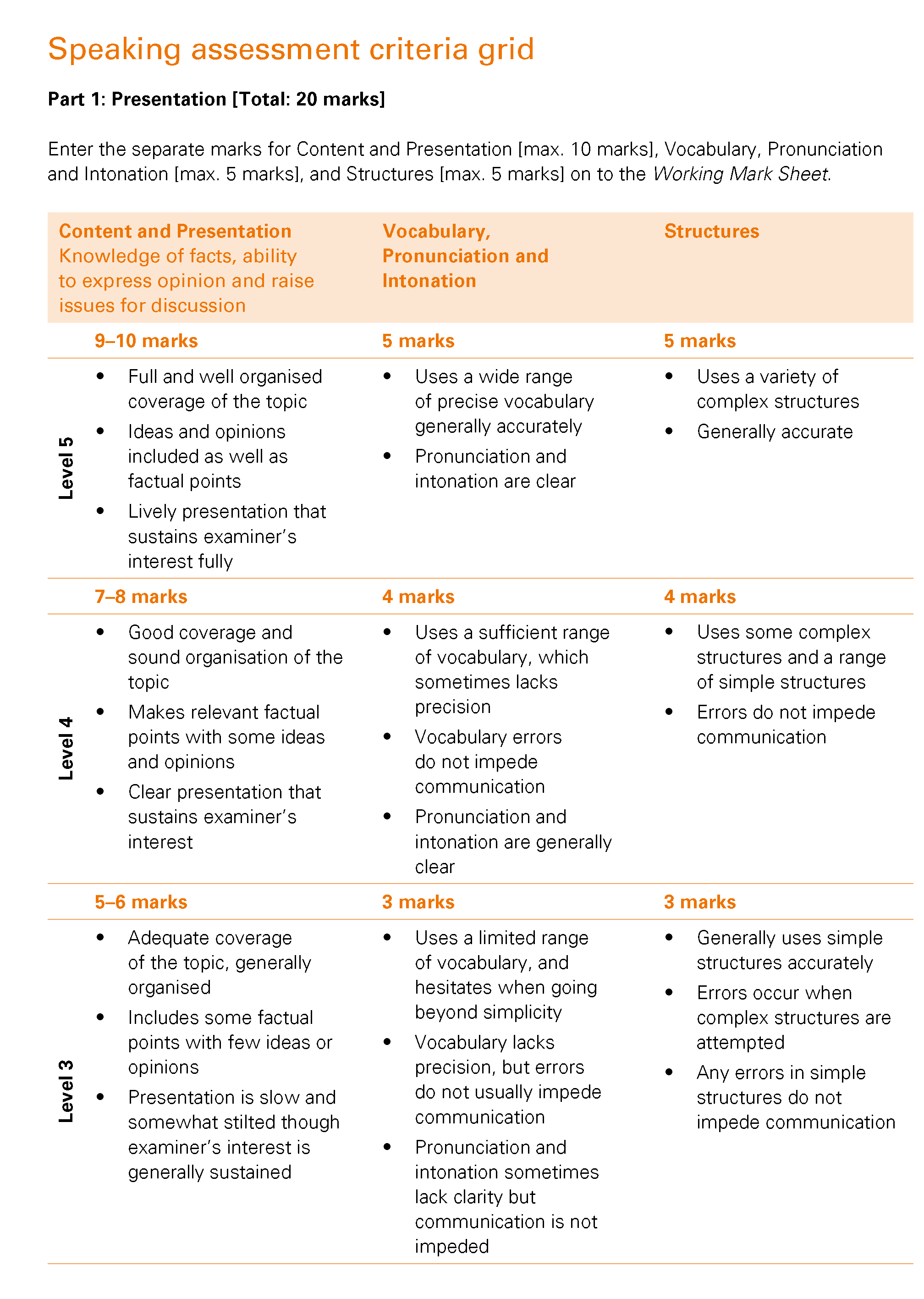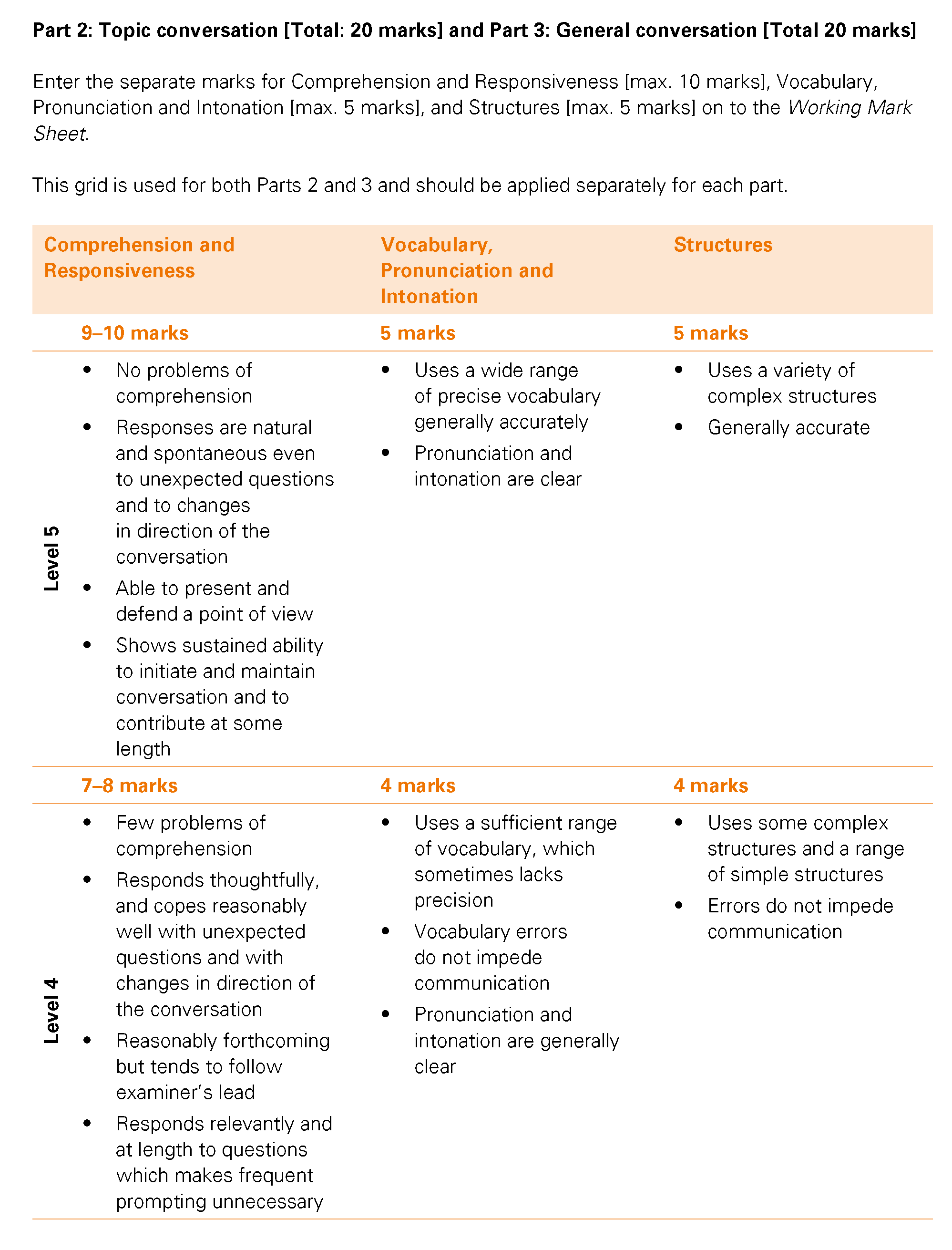Sorry, this activity is currently hidden
Section outline
-
Cambridge IGCSE™ Hindi as a Second Language 0549 (for examination from 2019)Example Candidate Responses (Component 03 - Speaking (optional))
-

Now that you have read through the Speaking Assessment Criteria Grids, you may want to practise marking a speaking test. Listen to the candidate responses below, make a note of the strengths and weaknesses of the candidate and give a mark, before you read the moderator comments and marks.
Please note: Information about the candidate and centre has been removed from the start of the recording to protect the identity of the candidate, however it is very important to include this information when submitting audios for moderation.


The candidate gives a well structured and organised presentation. She uses props to illustrate the concept related to the topic of Festival of Diwali which creates a lively presentation and sustains interest. She mentions two different theories behind the reason for celebrating Diwali and says which one she believes to be true. She describes the traditional practices of having fireworks to celebrate Diwali and gives her own opinion by saying that she does not like fireworks as they cause air and noise pollution. She goes on to support her opinion by the data about the three fold increase in air and noise pollution during the festival period. She expresses her own idea of how to celebrate Diwali by sharing food and drinks with friends and family.
Vocabulary, Pronunciation, Intonation:
The candidate uses a wide range of topic appropriate vocabulary accurately, with clear pronunciation and intonation. She uses words like उत्साह (enthusiasm), उमंग (excitement), खुशियाँ मनाना (celebrating happiness), भारतीय संस्कृति का एक महत्वपूर्ण त्योहार (an important festival of Indian culture) etc to convey the atmosphere of festivity. When asked about the meaning of the word ‘Diwali’, she gives a clear and full explanation. दीवाली शब्द का अर्थ है दीपों का कतार या पंक्ति, दीवाली के दिन हम दीप जलाकर...।Her responses are prompt and precise.
Structures:
The candidate uses some complex structures accurately and fluently to describe the two different theories for celebrating Diwali, दीवाली के बारे में विभिन्न समुदाय के लोग विभिन्न मान्यताएँ रखते हैं। रामायण में राम और सीता के बनवास से लौटने की खुशी में लोग दीवाली मनाते हैं और दूसरे समुदाय का यह मानना है कि नरकासुर नामक असुर के वध के कारण दीवाली मनाई जाती है।.
Mark awarded = 20 out of 20